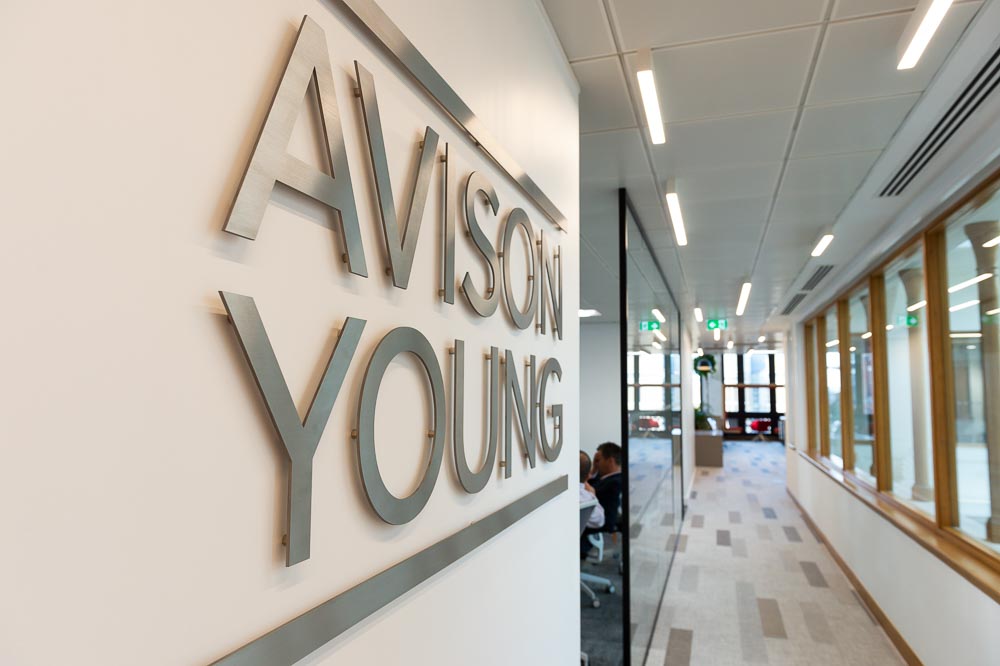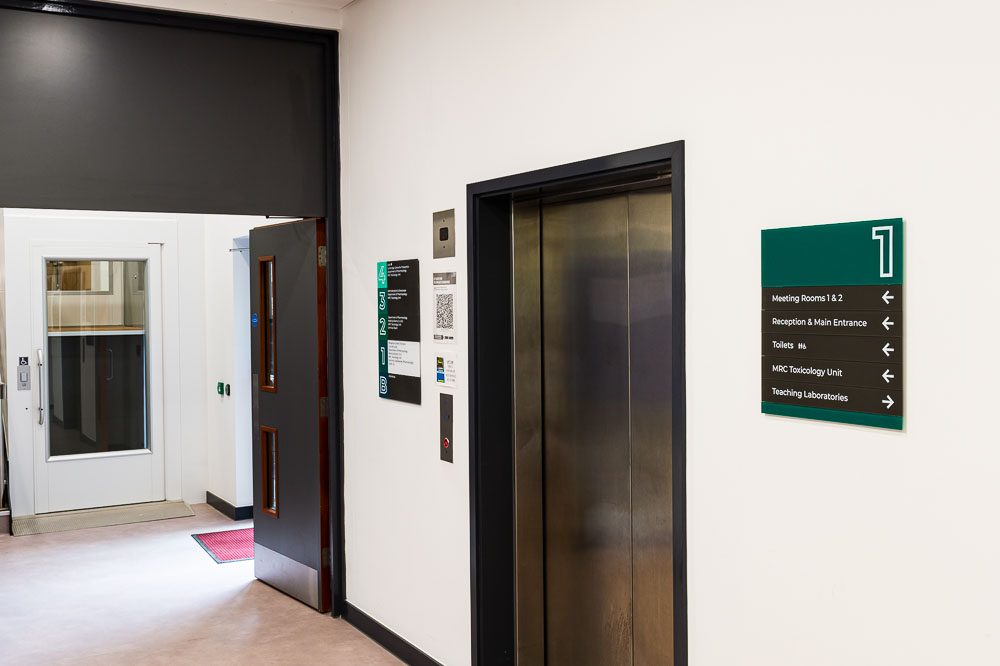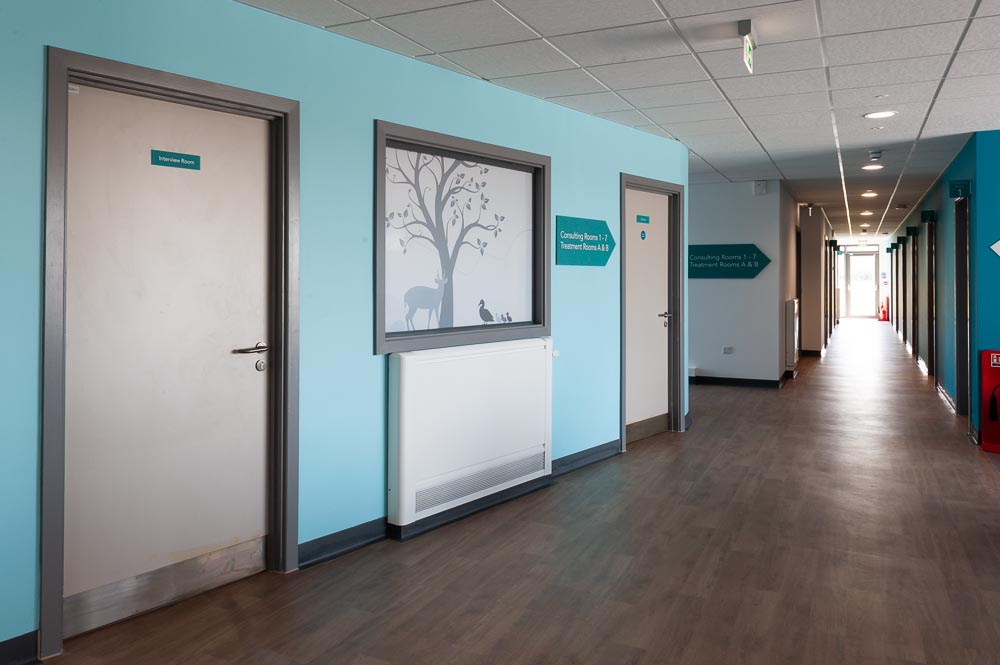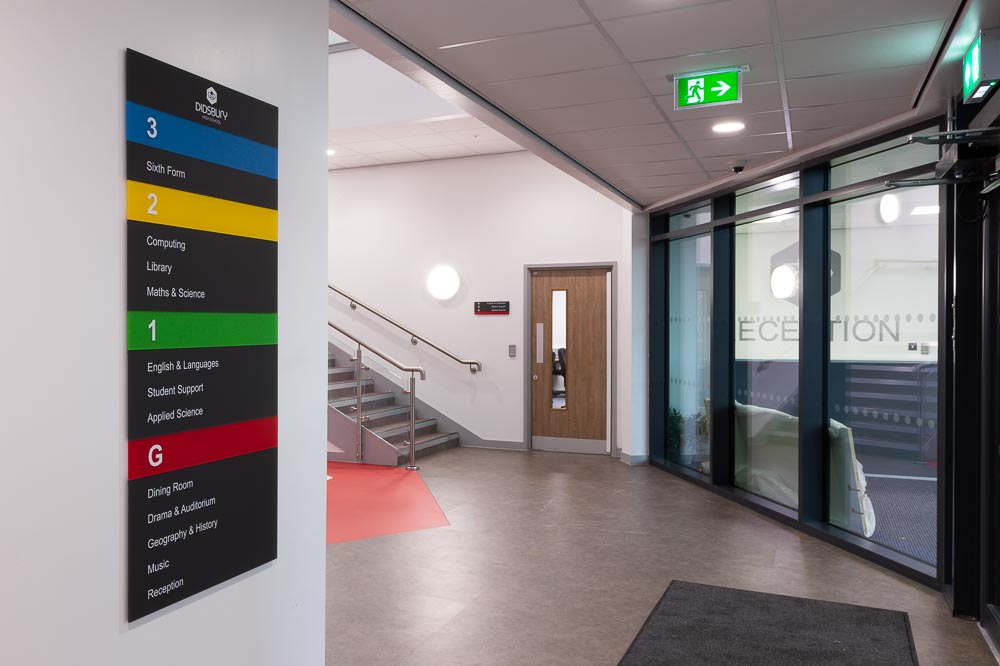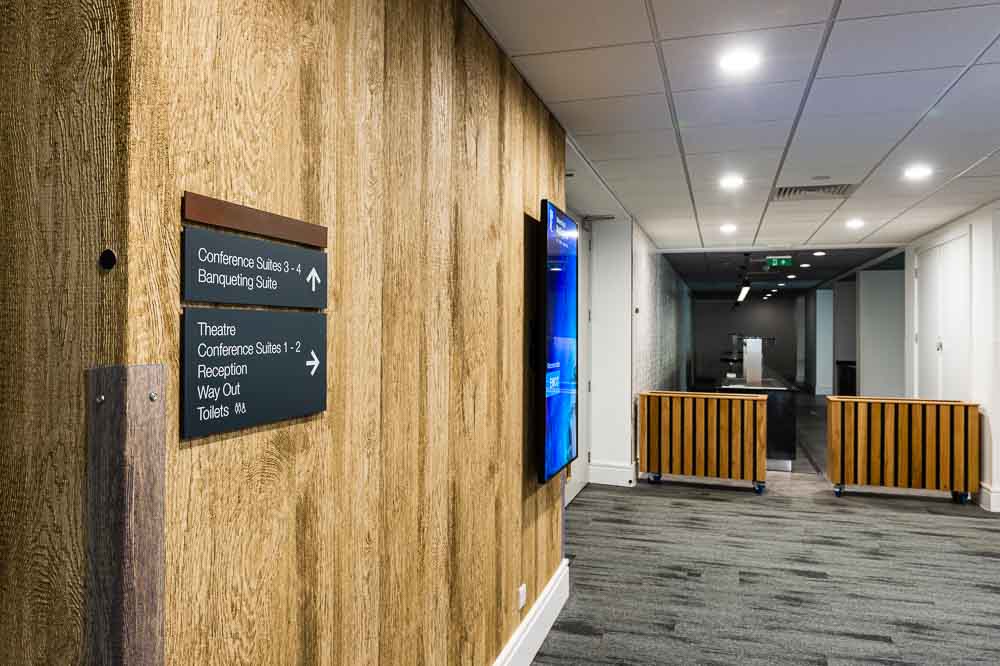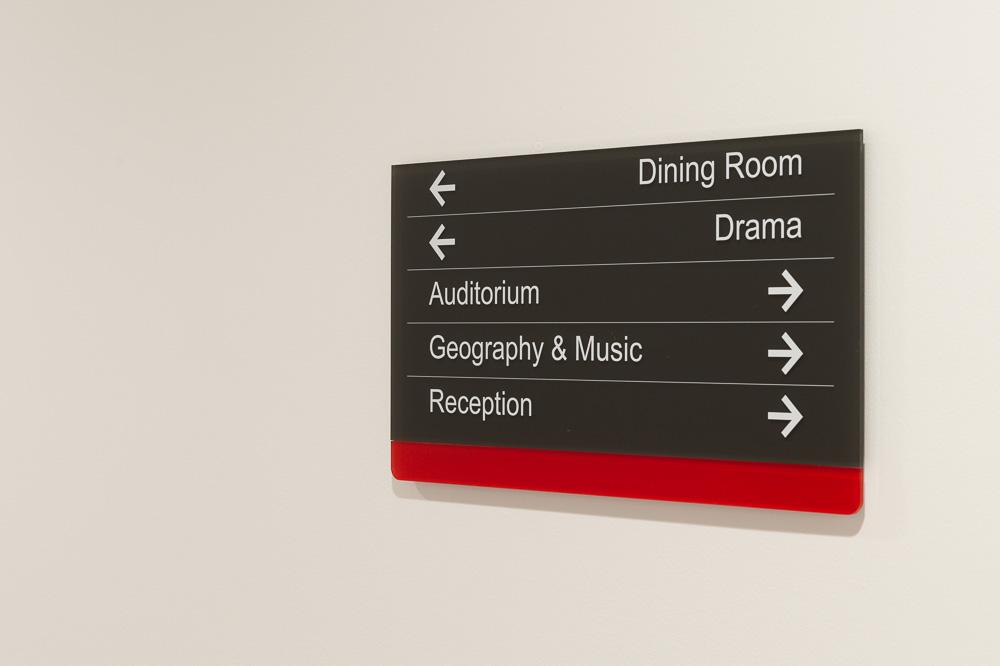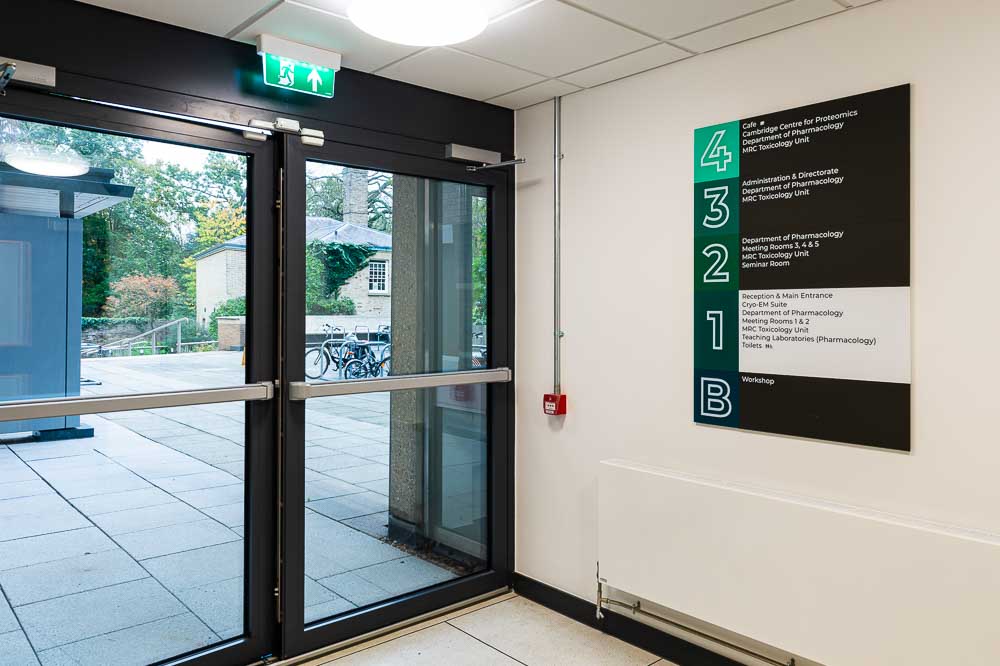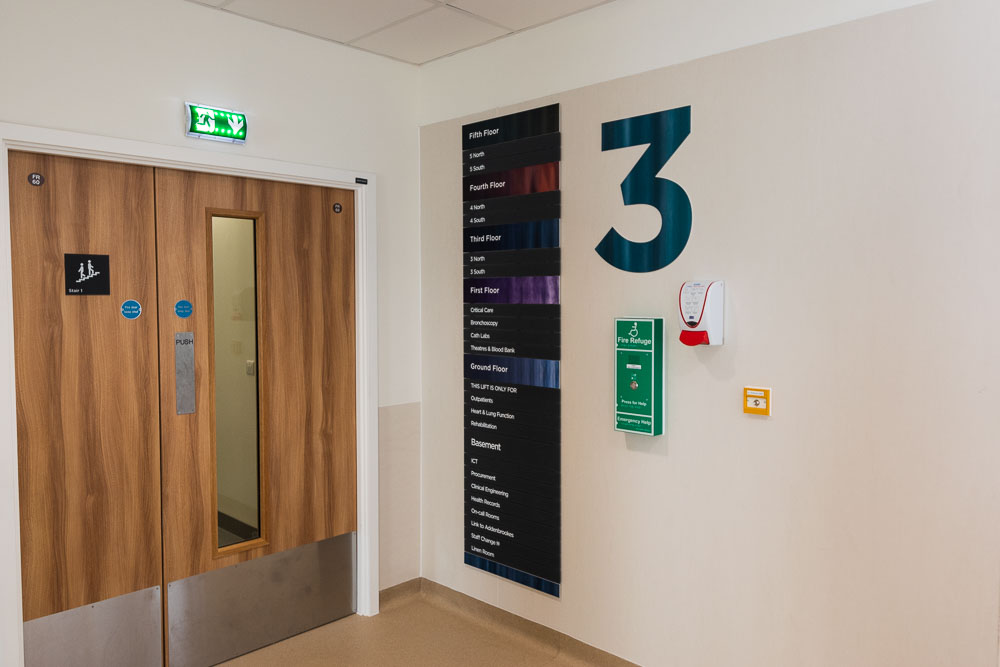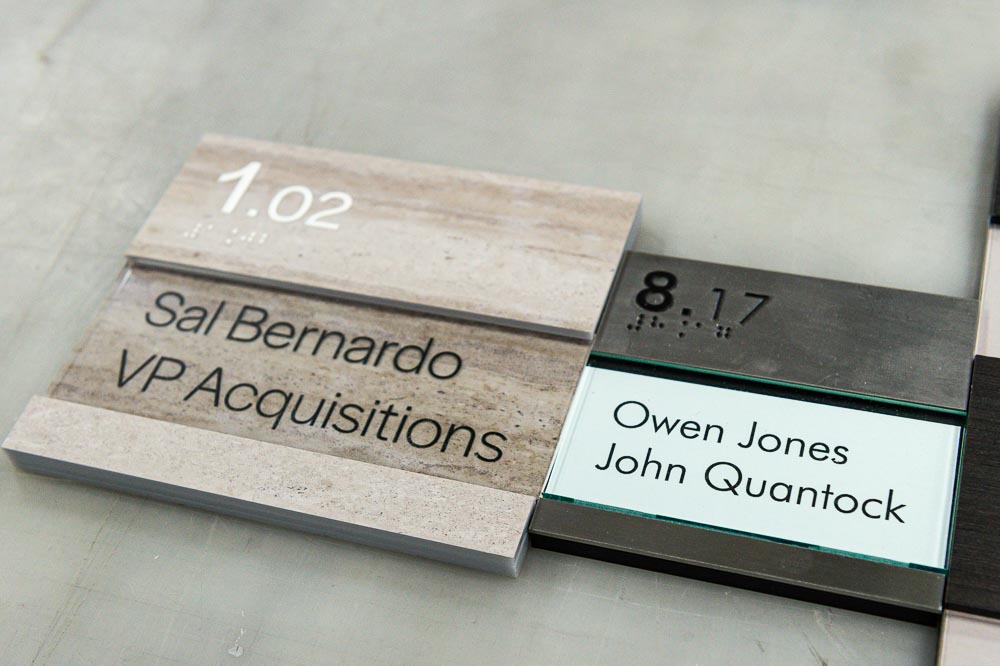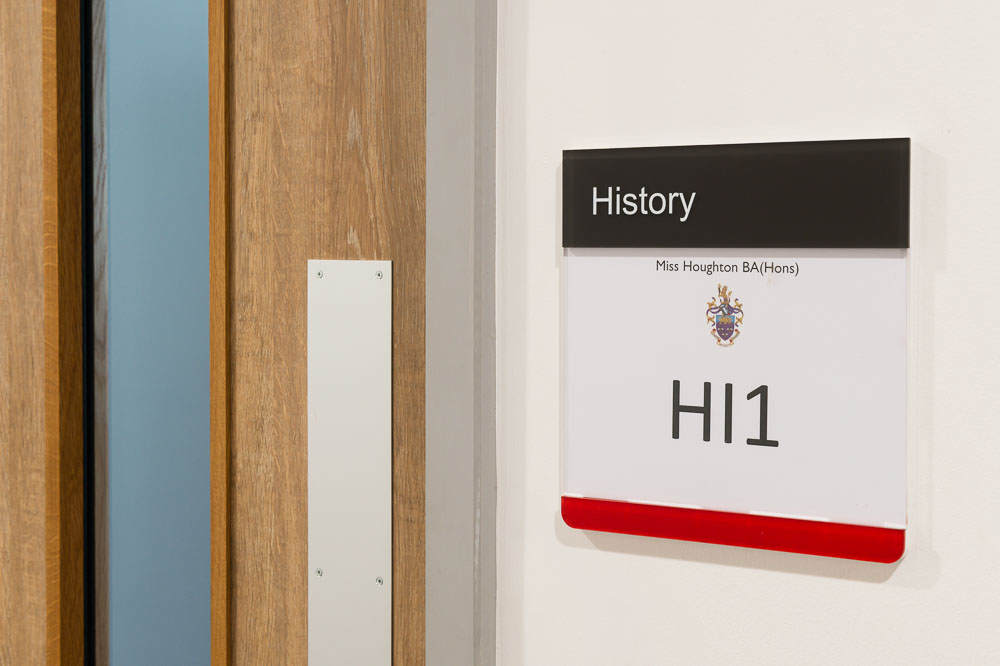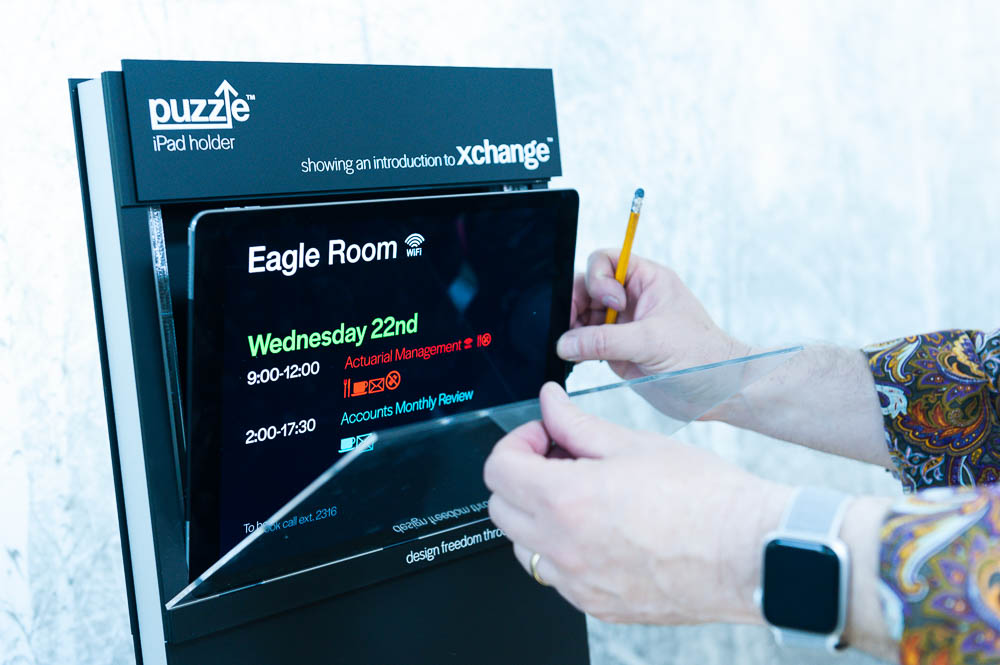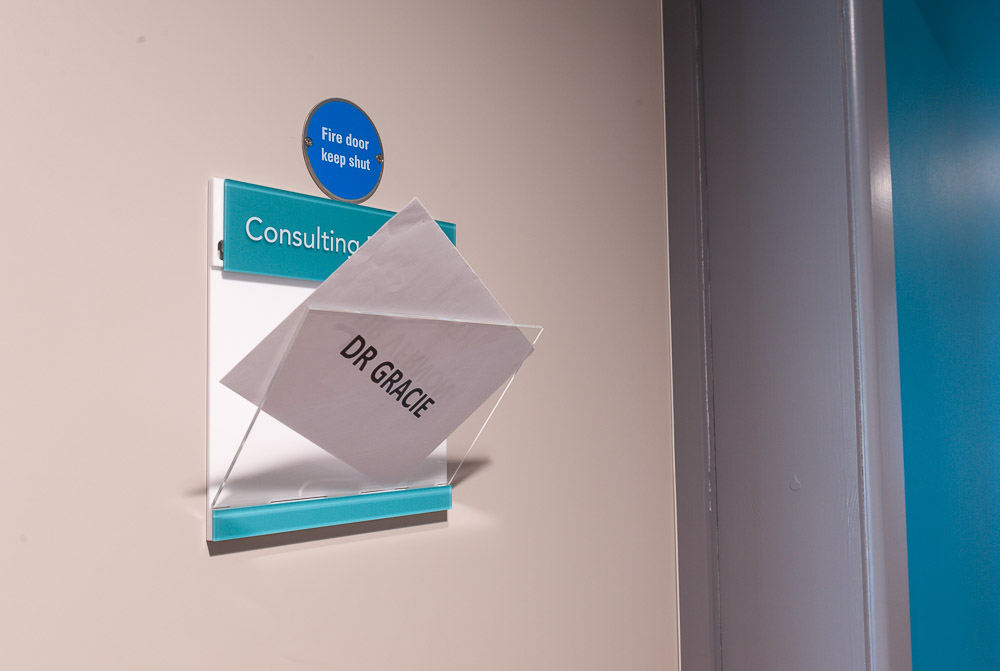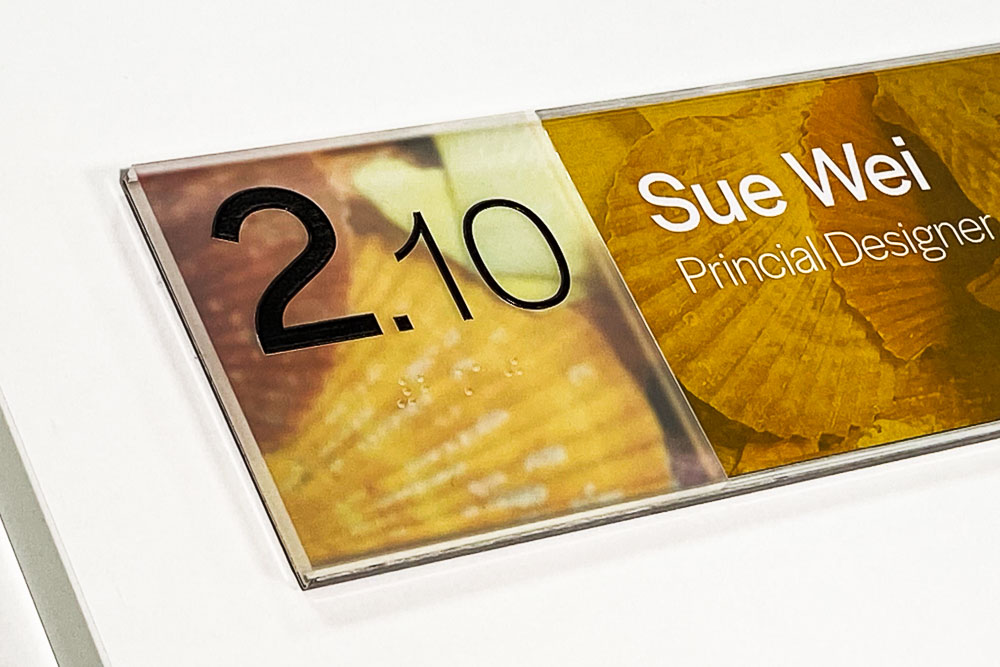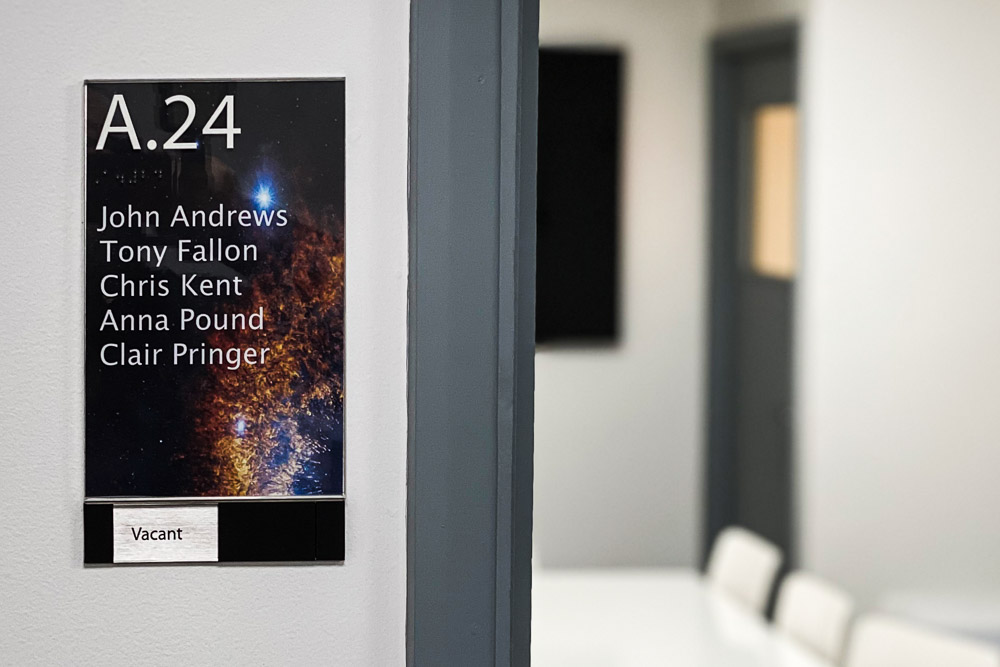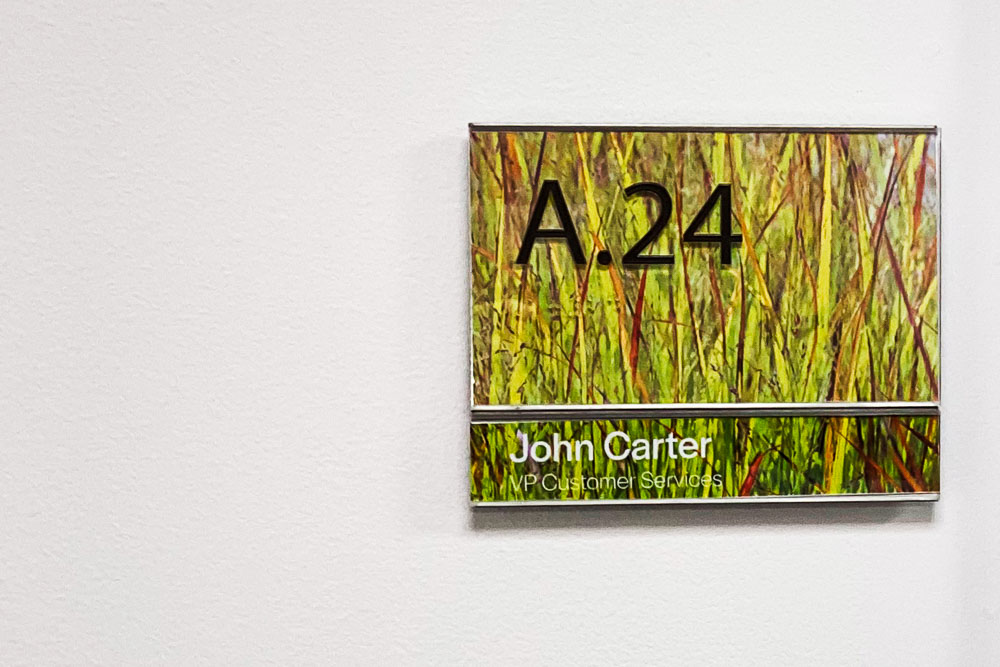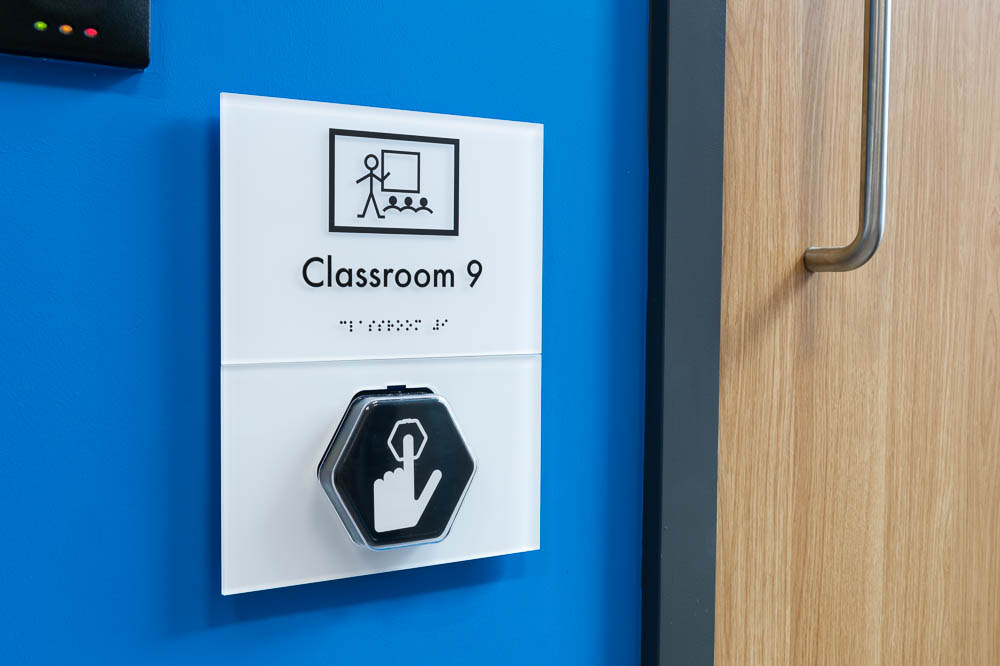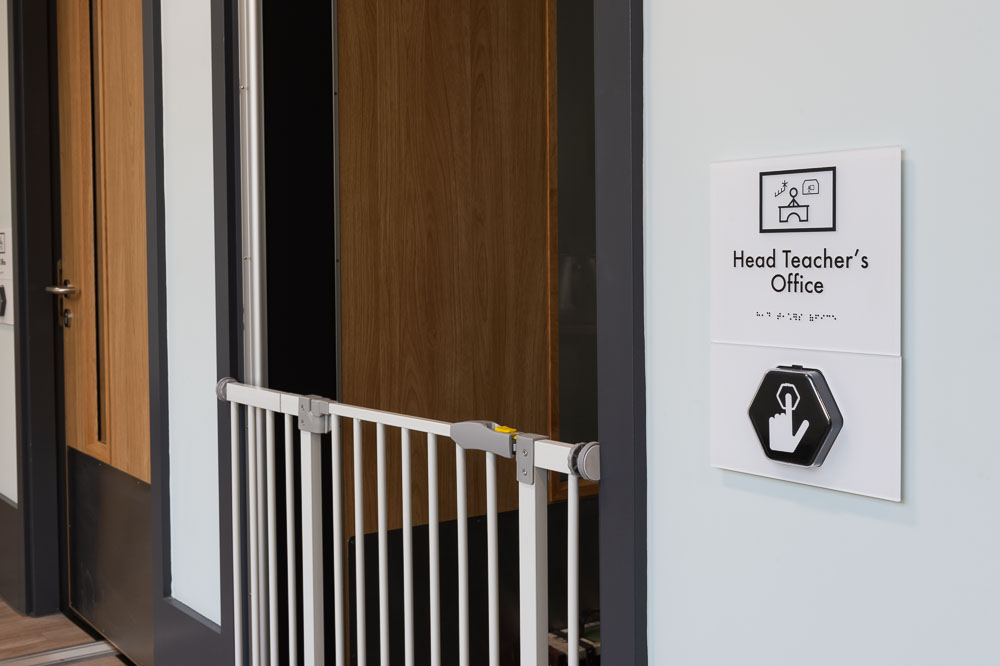Interior Signs
xsign has a long history of designing, manufacturing and installing interior signs in a range of spaces using a wide variety of materials on our patented fixing systems.
Internal Wayfinding and Directional Signs
With an architect at the heart of our business we design, manufacture and install internal sign systems in offices, schools, universities, hospitals and a range of architectural spaces.
Interior Signage Plays a Crucial Role in Navigating Modern Architecture
Signage can be used to support the architect’s vision for a built space.
Why is Internal Signage Needed?
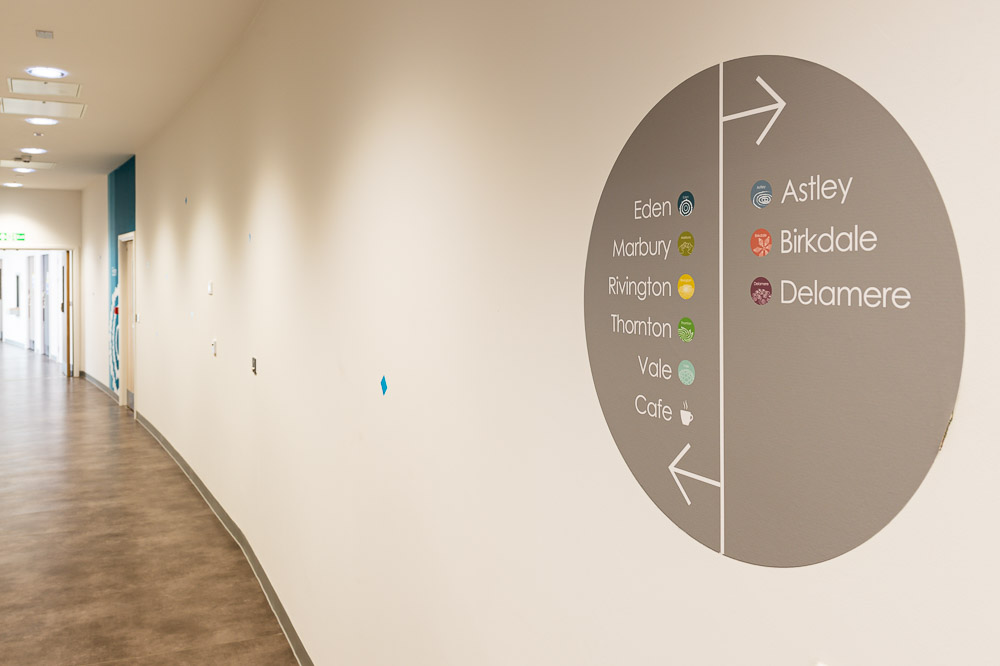
Well planned and clear signage inside an environment has a direct impact on the experience of customers and staff.
When people know where they are and how to get to their destination without barriers, they feel less stress and can focus more on experiencing the space they are in. Internal signage also includes vital health and safety signs and accessibility information.
What is the Difference Between Internal and Wayfinding Signage

Wayfinding signage refers to the planning and design of directional and informational signage for navigation. It can be implemented in any built environment including outside spaces.
Internal signage can include wayfinding signage but is found inside and can also include signs that are not just there to help people find their way.
Why should Internal Signage be Bespoke
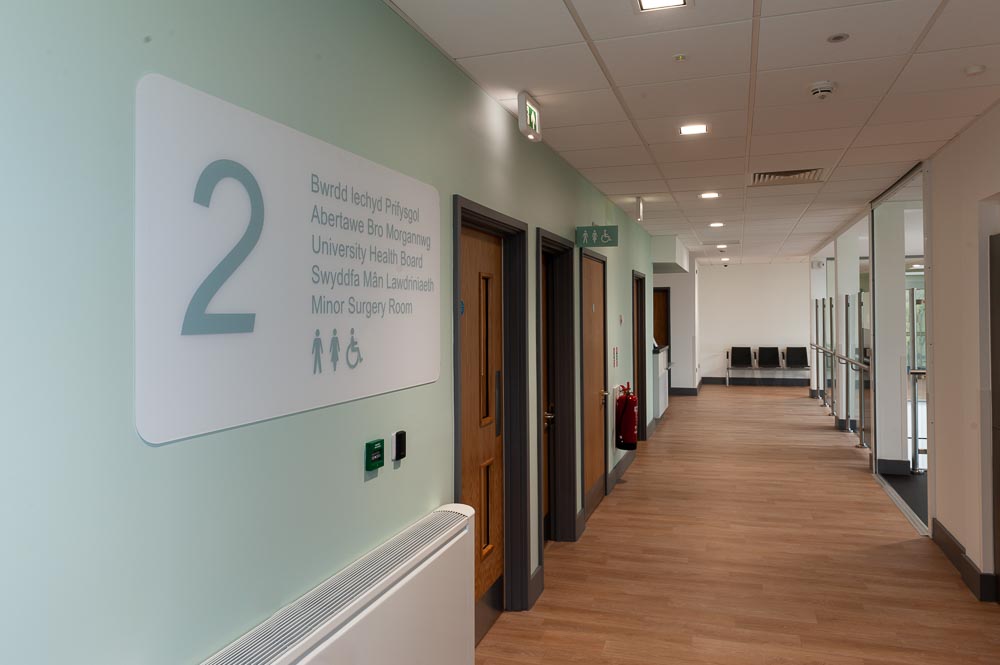
Bespoke signage goes beyond pure functionality and is designed to enhance the environment, represent brands, and communicate messages.
Architects use bespoke signage as a way to differentiate from their client’s competition. Choosing bespoke internal signs involves superior materials and artistic style.
Can Accessibility be Improved with an Interior Signage Strategy?
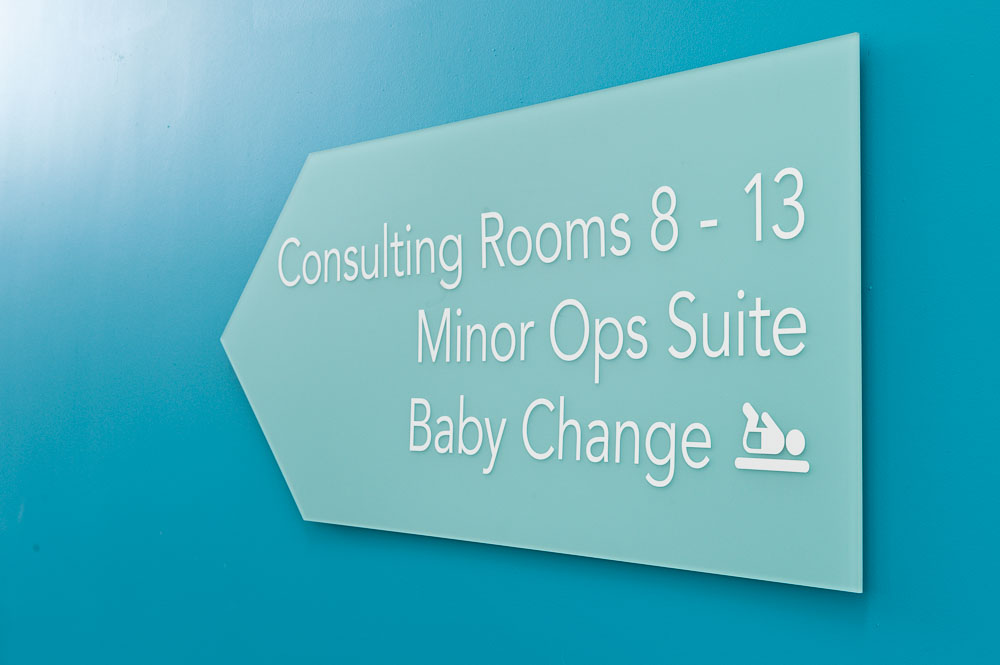
Whatever the overall goal of an interior signage strategy, accessibility is paramount and can always be improved upon. At xsign, we take accessibility seriously, designing unique signage products to make spaces as inclusive and as barrier free as possible.
An internal signage strategy designed by our team will always deliver on accessibility above and beyond current standards.
Making Signage Integral to the Architecture
Interior signage systems should provide freedom of choice, on a range of material finishes whilst offering permanency and high legibility.
What are the Main Benefits of Bespoke Interior Signage?
Signage in Hospitals plays a vital role in ensuring patient safety by providing an easy-to-navigate wayfinding scheme for visitors to the hospitals and for staff members.
Flexibility and Creativity

The interior environment is rife with opportunities for bespoke signage to impress customers and motivate employees. Each space is unique and therefore so are the signage needs.
Bespoke interior signage comes with the freedom of choice and ability to create unique and memorable spaces.
Enhance the User Experience

Wayfinding can make or break a customer journey. Intuitive and user-friendly internal signage keeps people calm and able to navigate easily.
Whatever the customer experiences, finding their way shouldn’t become a problem and a bespoke internal signage strategy proactively eradicates problems before they appear.
Making Your Brand Memorable

Bespoke interior signage can deliver additional messaging to customers about products and services.
As experienced signage architects we can weave a brand’s values and ideals alongside their colours and logos to communicate more than just directions.
Improve Accessibility

All your customers should be able to access your entire environment with no problems. We design internal signage to remove as many barriers as possible.
This includes using our innovative, accessible signage systems and working to recommended accessibility guidelines.
Innovation and Intuition
Interior signage systems should provide freedom of choice, on a range of material finishes whilst offering permanency and high legibility.
Using interior signs in built environments offers an opportunity for branding expression and creative flair.
Internal sign packages should blend functionality and good form. The architect can view signage products as an extension of the aesthetics and design of modern environments.
Learn more about our Interior Signage Products
Our jigsaw, puzzle, folio and talky products combine to provide an outstanding modular signage system.

The jigsaw system was developed and launched alongside the d line range in 2000 but now sits as a distinct and separate range, more fully expressing the jigsaw concept by adding multiple material choices to the pre-engineered secret fixing system. jigsaw is a key and commonly used interior sign type amongst our client installations.
jigsaw enables the easy switching of panels. The module is permanently fixed to the wall, but the secret fixing system provides security and flexibility in signage design.

Unique truly lockable door sign which allows a myriad of materials to be used. Easy to manage but hard to tamper with in a whole host of sizes and situations. puzzle is well-suited to schools, universities and office spaces.
We developed the puzzle system as a solution to a client brief. The client needed a signage solution, so we developed a new product.

A paper holding sign which can be fixed on its own or combined into modular door and directory signs. Innovations include tinted lenses and the option to have invisible fixings to hold acetate against glass.
Perforated and Word templates complete the solutions for the customer with signs supplied with text from Day One.

Imagine if a sign could talk. With Talky Signs, they do. We’ve developed a programmable talking sign, that speaks at the push of a button.
Our innovative Talky Sign product provides directional wayfinding and navigation for those with sight loss. Press the button and the sign talks to you. Building officers and facilities managers can programme the sign by recording an audio message.
Frequently Asked Questions
Interior signage provides important wayfinding information for building users so that they can easily and safely navigate their built environment. Interior signage also provides building owners and interior space designers with the opportunity to engage building users.
There is a legal requirement to provide safety signage to ensure that users know their nearest exit points in case of emergency. Once critical safety signage is in place, it is important that building users know how to navigate to key facilities such as toilets and lifts. Interior signage does not only need to be functional, it can also be aesthetic by using a range of materials and colours to bring the space to life.
There are many types of interior signage: simple directional signage fixed to walls, overhead suspended signage, projecting signs, a range of door signs and even talking signs.
xsign has developed a patented interior product range that includes Jigsaw, Puzzle, Folio and Talky. Each of these products have been developed by British Architect and company CEO, Mark Shaw-Smith. The patented product set gives architects and designers complete freedom of choice for internal sign schemes.
Interior sign installation depends on the product being used. Often adhesive tape is used to apply a sign directly to the surface. In the case of suspended signs or projecting signs, we would use a more permanent, secure fixture.
Use our contact form at the bottom of this page to make an enquiry and a member of our team will be in touch to discuss your requirements.
We have a dedicated sales team with a huge amount of experience in the signage industry. Feel free to use the contact form at the bottom of this email to make an enquiry or use the other contact methods listed to get in touch.
We work with both end users and main contractors. We have worked with the biggest main contractors in the UK, including Kier, Morgan Sindall, Galliford Try, Willmott Dixon, BAM and many others.
As well as providing interior signs for main contractors, we have also provided signage schemes for many architectural practices and we have worked with some of the biggest brands in the UK including BT, UBS, University of Birmingham, University College London Hospital and many others.

